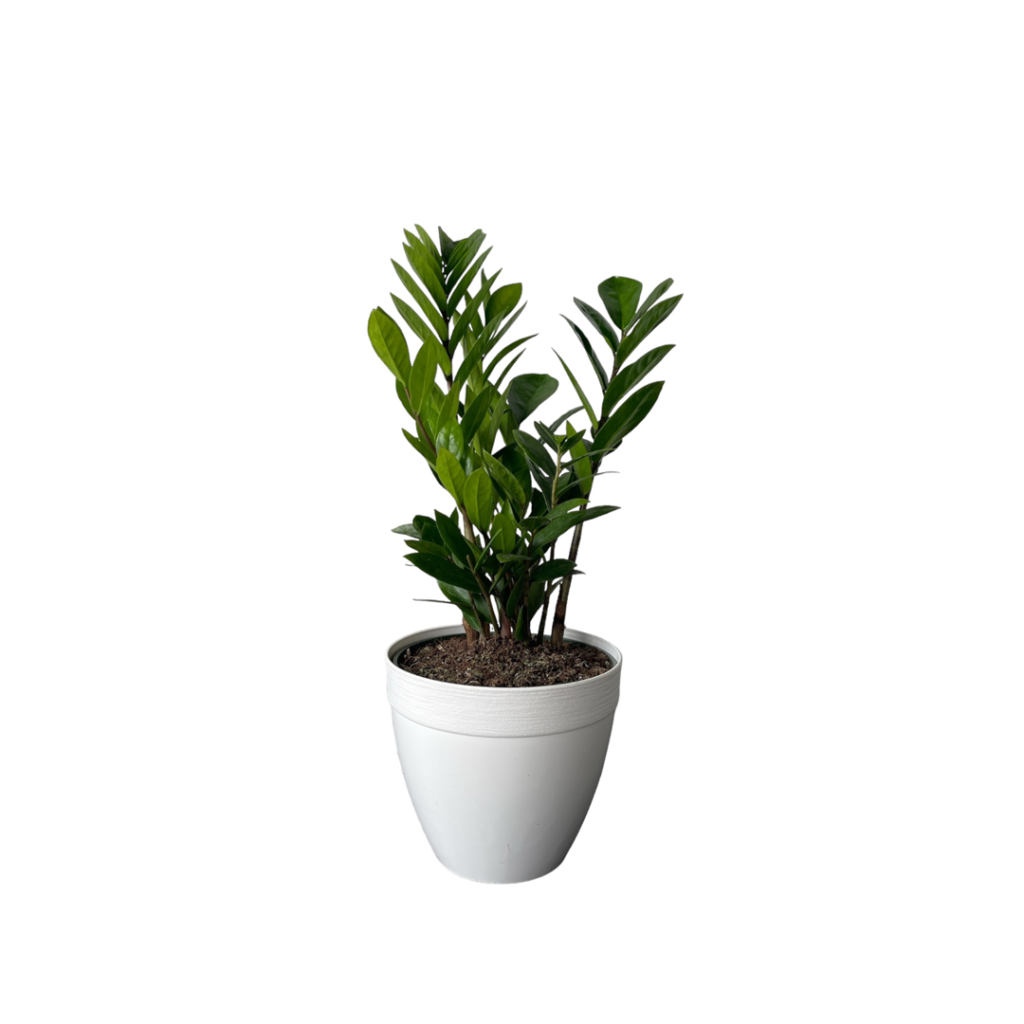
What is a ZZ Plant Flower?
Why is the ZZ Plant Flower Rare?
ZZ Plants are prized for their foliage rather than their flowers. In their natural habitat, these plants grow in arid conditions, and flowering is a response to ideal environmental factors. Indoors, achieving the right conditions to trigger blooming can be challenging but not impossible.
How to Encourage a ZZ Plant to Flower
Provide Bright, Indirect Light
- ZZ Plants are famous for surviving in low-light conditions, but blooming requires a bit more light. Place your plant in a spot with bright, indirect sunlight.
Keep the Soil Well-Drained
- Use a well-draining potting mix and let the soil dry out between waterings. Overwatering can stress the plant and prevent it from flowering.
Maintain Optimal Temperatures
- ZZ Plants thrive in temperatures between 65°F and 75°F (18°C to 24°C). Avoid placing them in drafty areas or near temperature extremes.
Fertilize Sparingly
- Use a balanced, diluted fertilizer every 6-8 weeks during the growing season (spring and summer). Over-fertilizing can harm the plant rather than help.
Be Patient
- Flowering can take years and depends on the plant’s maturity and overall health. Patience is key.
Is the ZZ Plant Flower Toxic?
Like the rest of the ZZ Plant, its flowers are mildly toxic to humans and pets if ingested. Keep the plant out of reach of curious children and animals to ensure safety.
Styling Tips for the ZZ Plant
Even without flowers, the ZZ Plant is a design favorite. Its symmetrical, glossy leaves make it a perfect addition to any modern or minimalist decor. Place it on a shelf, desk, or corner to brighten up your space effortlessly.
Fascinating Facts About the ZZ Plant
- The ZZ Plant is native to Eastern Africa, particularly drought-prone regions.
- It’s known as a “survivor plant” for its ability to thrive on neglect.
- The plant stores water in its thick rhizomes, making it drought-tolerant.
- ZZ Plants are excellent air purifiers, removing toxins like xylene and toluene from indoor air.
Why Add a ZZ Plant to Your Collection?
ZZ Plants, including those available at Andersen Farms, are more than just trendy houseplants. While the ZZ Plant flower may be rare, it’s a rewarding sight that highlights the plant’s unique charm. Whether your ZZ Plant blooms or not, its striking foliage and low-maintenance nature make it a must-have for any home. Ready to bring one home? Check out Andersen Farms for healthy and vibrant ZZ Plants that can elevate your indoor garden. Start your ZZ Plant journey today and discover the joy of this incredible indoor plant.
